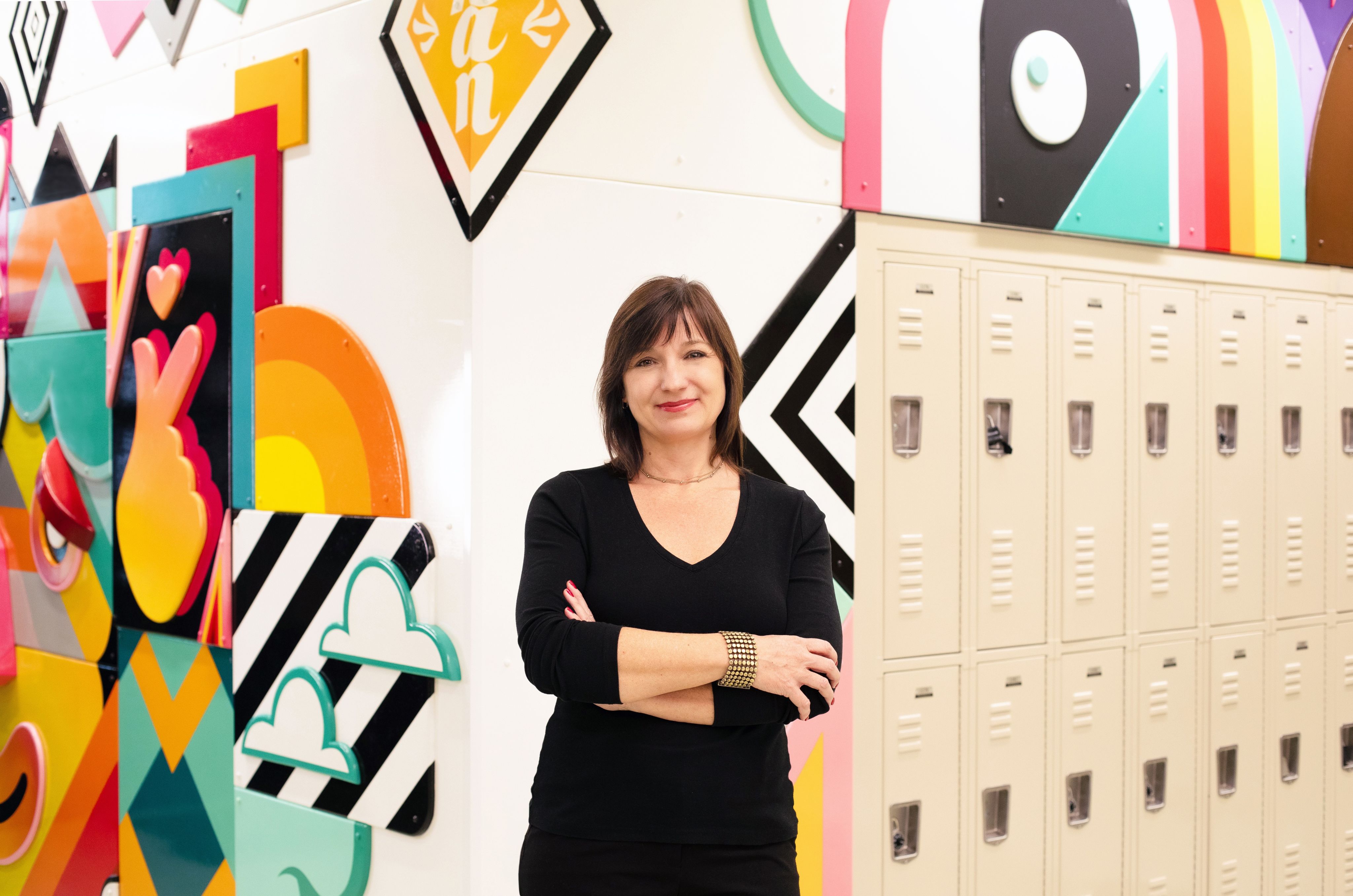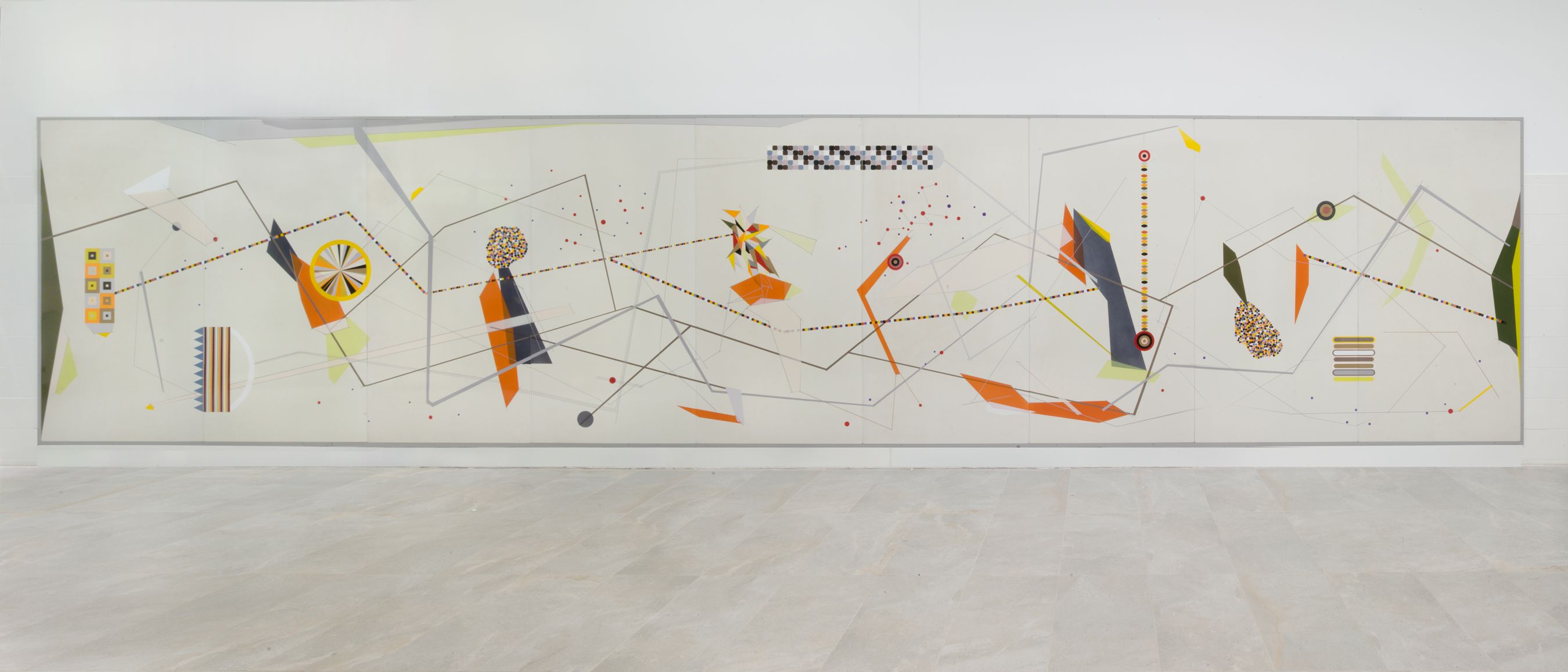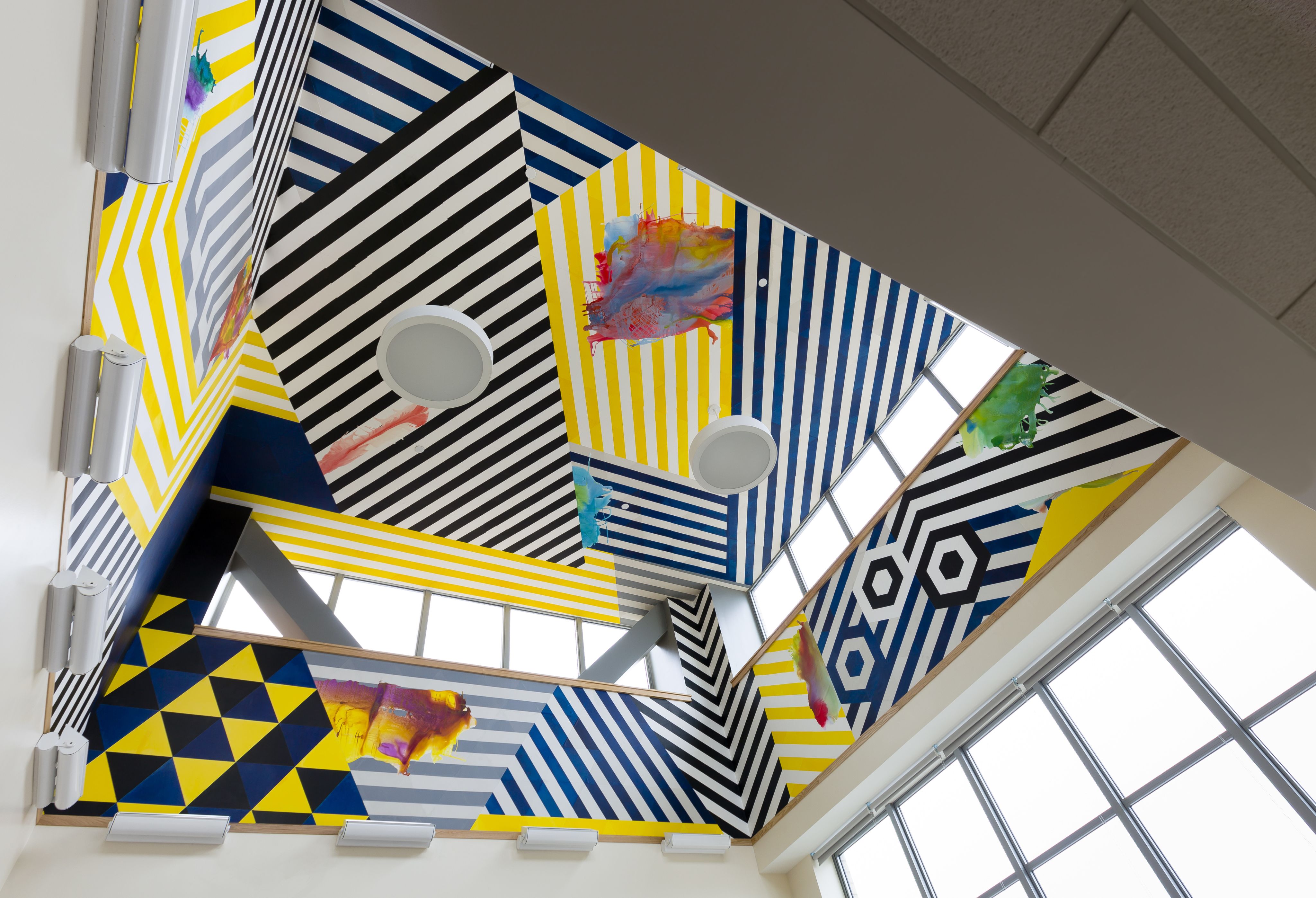MOST SCHOOL SPIRIT
Tania Duvergne's Education Curation

by Micco Caporale (MA 2018)
When the New York City Department of Education needs art for its schools, it talks to School of the Art Institute of Chicago (SAIC) alum Tania Owcharenko Duvergne (BFA 1991).
As the director of Public Art for Public Schools at the NYC School Construction Authority, Duvergne has spent 13 years brokering opportunities between artists and institutions to bring museum-quality artworks to children in New York.
But commissioning artwork for kids is no easy task. While studying contemporary art at SAIC, Duvergne learned firsthand how controversial art even for adults can be, so she's pursued research and professional opportunities that have grown her ability to take calculated risks while challenging audiences. Now she uses those lessons to cater to students—and loves every minute of it.

Artwork by Danielle Tegeder. Photo by Jason Mandella
Artwork by Danielle Tegeder. Photo by Jason Mandella
"Generally speaking, children—especially younger children—spend more waking hours in a school building than they do at home," Duvergne explained. "They're in their school building five days a week, for years, and some of them may never visit a museum or gallery or see a professional work of art in person."
To say Duvergne's job is a unique opportunity is an understatement. There's no other position like it in the country, and her audience is children, who not only need to be able to understand the works they encounter but whose understanding needs to be able to mature as they do. As a longtime curator, Duvergne never wants to take her audience for granted, even if they're five years old. She's worked with high-profile artists on projects that reflect their ideas and aesthetics but remain accessible to all members of the average family. This includes many from the SAIC community, like Jeffrey Gibson (BFA 1995), Saya Woolfalk (MFA 2004), and Professor Emerit Candida Alvarez; works by more than 30 SAIC faculty and alums are included in the Public Art for Public Schools collection.

Artwork by Jeffrey Gibson. Photo by Etienne Frossard
Artwork by Jeffrey Gibson. Photo by Etienne Frossard
During her time at SAIC, Duvergne remembers the prevalence of artworld controversies, both locally and nationally. Her first year at the School, David K. Nelson made national news for his piece Mirth & Girth, which showed late Black Mayor Harold Washington in lingerie. During her second year, Dread Scott (BFA 1989) made national news for his artwork What Is the Proper Way to Display a U.S. Flag?, which provided a guestbook for reactions to a politically charged photo montage that viewers had to stand on an American flag to sign.
When she decided to pursue her master's at the Sorbonne, her thesis focused on Richard Serra’s controversial Tilted Arc, a Corten steel sculpture installed in a New York Federal Plaza. The unprecedented public and legal debates around its removal and testimonies from the federal lawsuit provided Duvergne with a unique opportunity to hear the concerns and positions of all sides, building the foundation for her public art curatorial practice.

Artwork by Gisela Insuaste. Photo by Jeffrey Gray Brandstead
Artwork by Gisela Insuaste. Photo by Jeffrey Gray Brandstead

Artwork by Saya Woolfalk. Photo by Etienne Frossard
Artwork by Saya Woolfalk. Photo by Etienne Frossard

Artwork by Sanford Biggers. Photo by Etienne Frossard
Artwork by Sanford Biggers. Photo by Etienne Frossard
Duvergne's professional interests have centered on contemporary and public art. Before becoming the director of Public Art for Public Schools, she was an independent curator and editor and worked for art organizations and public art projects including INSITE SanDiego/Tijuana and NYC Arts for Transit.
Using research- and experience-based knowledge, Duvergne's practice is driven by questions like, "What is the difference between public and private art?", "What is the best way to display art?", and "What is freedom of speech?" Her expertise in curating public art has uniquely positioned her to select pieces that both challenge and inspire.
"We want each artwork that we commission to make every child who encounters it feel like they are a part of it and it is a part of them," Duvergne said about her current role. “A successful work is when it sparks a child’s interest. One time we had just completed an installation in a lobby, and a mother came into the building with two young children. The boy comes around the corner, sees us, looks up at the artwork on the wall, and his jaw drops. He runs back to grab his mother and his younger sister and pulls them over to show them the artwork. He couldn't believe this thing was in his school!”
"If a piece can bring some joy, some lightness, or some curiosity, I've done my job."
Duvergne can't pick a favorite project because each one is so unique: mosaics, blown glass, curio cabinets, and more. She enjoys that no two commissions have been alike, which has kept her days varied and interesting. The only constant is her intended impact.
"A piece might simply aesthetically enhance kids' environment, but our hope is that it ignites something—a different way of looking or thinking. If a piece can bring some joy, some lightness, or some curiosity, I've done my job." ■
